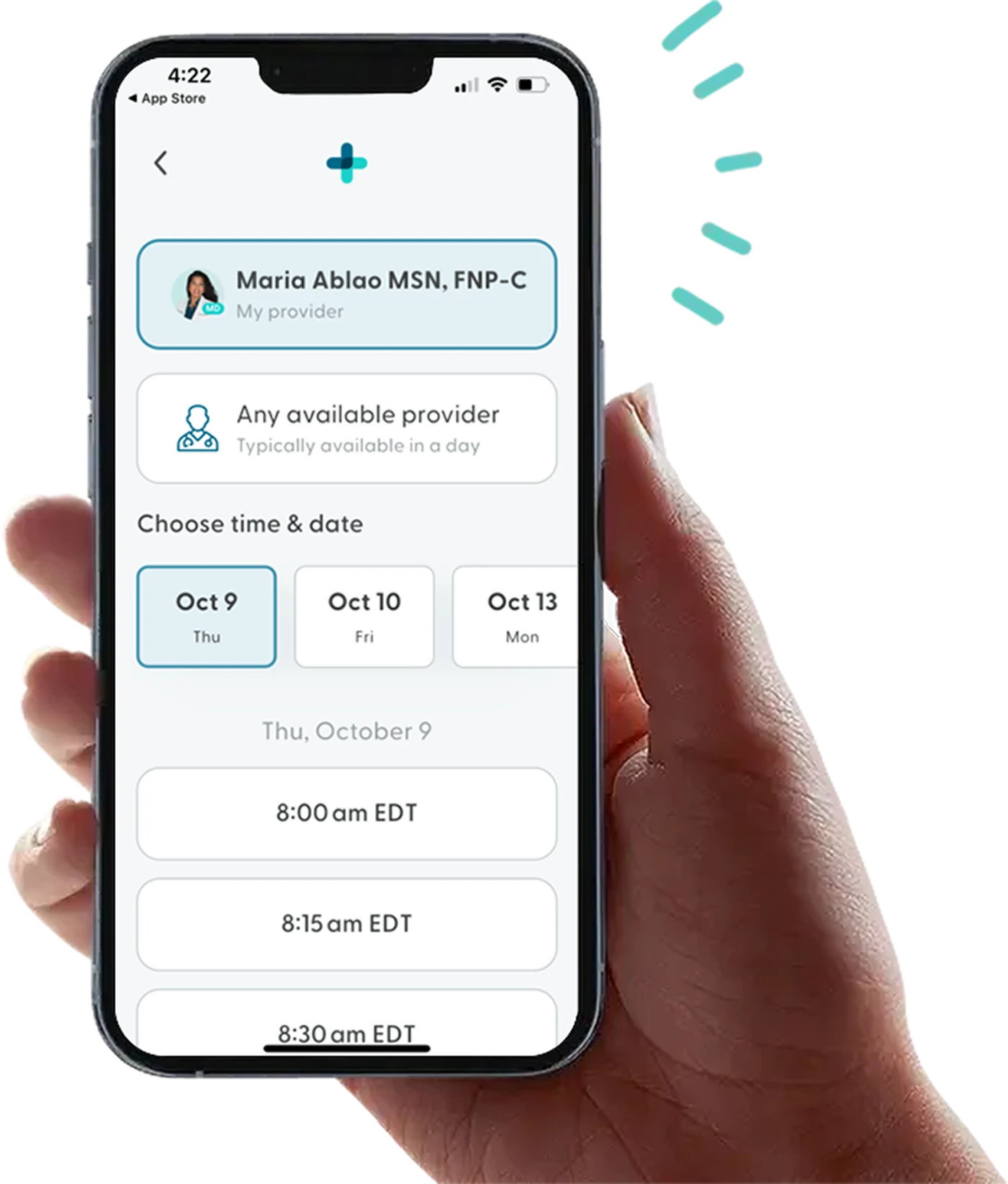What is a Wheat Allergy? Symptoms and Signs to Recognize
The smell of sweet and savory baked goods is often difficult to resist. However, those with a wheat allergy may experience adverse symptoms when eating certain baked goods.
A wheat allergy is an immune response to proteins in wheat. A wheat allergy may trigger an immunoglobulin E (IgE) response from the immune system. IgE is an antibody naturally found in the body that alerts the immune system when the body comes into contact with allergens.
Food allergies affecting your daily life?
Speak to a healthcare provider online about your allergy symptoms today.


Who is Most at Risk for a Wheat Allergy?
Wheat allergies are more common in children, though many outgrow them as they get older. While wheat is not one of the most prevalent allergens in the U.S., certain people are at higher risk.
People with celiac disease — an autoimmune condition that causes an allergy to gluten (a protein found in wheat, rye, and barley). Celiac disease is a hereditary condition often passed on from one or both parents. Not everyone shows signs of celiac disease right away. Symptoms can increase over time with age.
What are the Symptoms of a Wheat Allergy?
Those with a wheat allergy may experience different symptoms depending on the severity of their allergy. Symptoms may begin within a few minutes of eating wheat.
Wheat allergy symptoms a person with a wheat allergy may experience after consuming wheat proteins include:
Fatigue
Abdominal pain
Shortness of breath
Nausea
Hives
Congestion
In severe cases, a person may experience anaphylaxis — a life-threatening allergic reaction. Be sure to seek emergency help if you have breathing issues, severe chest pain, or trouble swallowing.
What Foods Should You Avoid?
The Food Allergen Labeling and Consumer Protection Act (FALCPA) requires distributors to clearly label foods containing wheat. This is typically listed right below the main ingredient list on the label of a product.
Sources of wheat you may not be aware of include:
Soy sauce
Natural flavoring
Gelatinized starch
Vegetable starch
Salad dressing
Taco seasonings
Beef jerky
Veggie burgers
Frozen vegetables
Some cosmetic items also contain wheat. In case of emergency, a healthcare provider may recommend carrying around an EpiPen (epinephrine injection). An EpiPen is used during emergencies to manage symptoms until emergency help arrives.
Recommended Wheat Alternatives
While rice and other grains are staples of many meals, there are substitutions you can eat instead.
Those with a wheat allergy may consider consuming the following alternatives:
Arrowroot starch
Millet
Quinoa
Sorghum
Buckwheat
Amaranth
Many people with a wheat allergy follow a gluten-free diet. This consists of predominantly purchasing products labeled gluten-free. You can also speak with a nutritionist or a licensed healthcare provider about ways to change your diet.
Tips for Avoiding Cross-Contamination with Wheat
Even if a person doesn’t eat foods that contain wheat, cross-contamination can occur in facilities. Be sure to thoroughly clean cooking surfaces before eating. The risk of cross-contamination is higher at restaurants and buffets as well.
Where Can I Learn More About Food Allergies?
At LifeMD, you can speak with a licensed healthcare provider about what to do if you suspect you’re allergic to wheat. They can give you tips for keeping yourself safe during an allergic reaction and alternate food options to consider.
Book an appointment today to learn more about managing a wheat allergy.
More articles like this
Feel better with LifeMD.
Your doctor is online and ready to see you.
Join LifeMD for seamless, personalized care — combining expert medical guidance, convenient prescriptions, and 24/7 virtual access to urgent and primary care.

 Medically reviewed and edited by
Medically reviewed and edited by 








